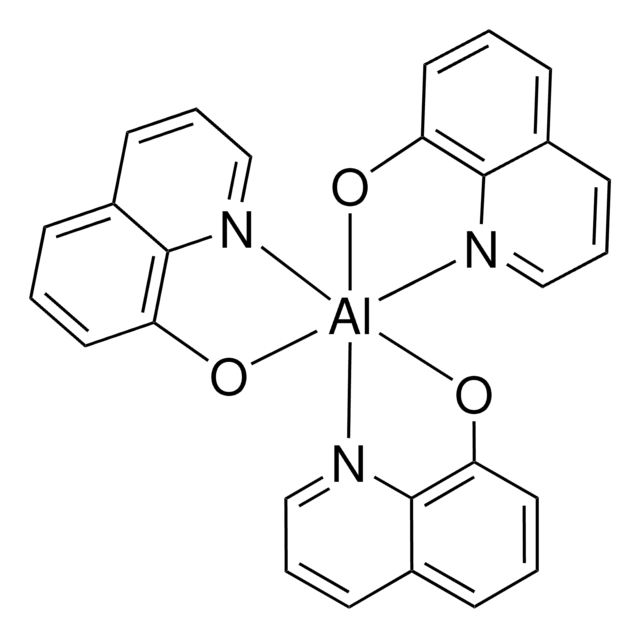701491
Silicon dioxide, alumina doped
nanoparticles, dispersion, <50 nm particle size, 20 wt. % in H2O, ≥99.9% trace metals basis
Synonym(s):
silicic anhydride, alumina doped preparation
About This Item
Recommended Products
Assay
≥99.9% trace metals basis
form
dispersion
nanoparticles
composition
aluminum, 7.5 wt. %
concentration
20 wt. % in H2O
surface area
75.5 m2/g , BET
particle size
<50 nm
pH
4-6(neat)
density
1.087 g/mL at 25 °C
SMILES string
O=[Si]=O.O=[Al]O[Al]=O
InChI
1S/2Al.O2Si.3O/c;;1-3-2;;;
InChI key
HNPSIPDUKPIQMN-UHFFFAOYSA-N
Looking for similar products? Visit Product Comparison Guide
Related Categories
General description
Legal Information
Storage Class Code
12 - Non Combustible Liquids
WGK
WGK 1
Flash Point(F)
Not applicable
Flash Point(C)
Not applicable
Personal Protective Equipment
Choose from one of the most recent versions:
Already Own This Product?
Find documentation for the products that you have recently purchased in the Document Library.
Customers Also Viewed
Articles
Hydrogen is one of the most important resources in providing food, fuel, and chemical products for our everyday life. Sustainable catalytic hydrogen production from bioethanol has gained significant attention in recent years due to globally diminishing fossil fuel supplies, which have necessitated the search for new chemical feedstocks.
Silica is a very popular inorganic nanomaterial used in a wide range of applications including fillers for rubber, catalyst supports, separation media, carriers in food and agriculture, and abrasive/anticaking agents in cosmetics. It is also widely believed to be an important material for biomedical applications for following reasons.
Advanced Inorganic Materials for Solid State Lighting
Our team of scientists has experience in all areas of research including Life Science, Material Science, Chemical Synthesis, Chromatography, Analytical and many others.
Contact Technical Service






